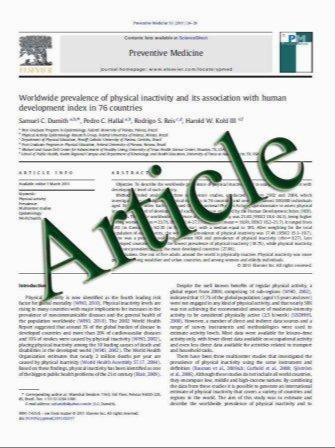Development and validity of the DyNaChron questionnaire for chronic nasal dysfunction
- نوع فایل : کتاب
- زبان : انگلیسی
- مؤلف : Sophie Kacha Francis Guillemin Roger Jankowski
- چاپ و سال / کشور: 2011
Description
Nasal symptoms are the main elements that lead to a therapeutic decision and allow for evaluating treatment effects or natural evolution. Despite availability of several questionnaires with good measurement qualities, no systematic assessment takes into account the specific physical and psychosocial consequences of each of the six main nasal symptoms, independently of the disease. We proposed to measure these symptoms with the use of a selfreporting questionnaire and to test the validity of the questionnaire in a large representative sample of patients attending outpatient rhinologic clinics. The study was conducted in two parts: (1) expert-based development and testing of the face validity of a questionnaire in French; and (2) validity testing, including construct validity by factor analysis, reproducibility by intraclass correlation coefficient (ICC) and Bland and Altman plots, and sensitivity to change by standardized response means, on a large sample of patients in a prospective multicenter study. DyNaChron, a questionnaire with 78 items divided into six domains and exploring both the physical and psychosocial repercussions of CND, was developed. In total, 759 patients completed the questionnaire at a first visit to a clinic, and 539 again 19.5 days later, on average. The questionnaire structure was confirmed to be composed of six domains (6 factors explaining 68.7% of the variance), with two dimensions in each domain. The questionnaire’s convergent validity was confirmed; the Cronbach alpha coefficient for domains was high (0.93–0.96), the ICC ranged from 0.8 to 0.92, and the questionnaire’s sensitivity to change was greater for patients with improved health status than for those with worsened status. DyNaChron is a well-structured questionnaire with a high degree of internal consistency and all properties needed to be used in research. It should now be compared with other questionnaires and objective measures to assess whether or not DyNaChron better measures disease severity and its changes. Further work will involve shortening the instrument for use in clinical practice and create a ‘‘patient symptomatology score’’
Eur Arch Otorhinolaryngol DOI 10.1007/s00405-011-1690-z, Received: 10 February 2011 / Accepted: 21 June 2011


